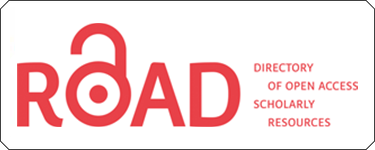Differences in the Quality of Indonesian Language Based on Gender at MI Hudatul Hailalah Bojonegoro (Psycholinguistic Analysis)
Abstract
This study uses a psycholinguistic approach to analyze the differences in language quality between male and female students at MI Hudatul Hailalah Bojonegoro. The main focus of this study is the differences in the use of sentence beginnings, sentence structures, and the completeness of the stories produced by each group. The method used is observation and analysis of transcripts of picture stories retold by students. The results of the study indicate that male students tend to use short, direct, and action-focused sentences, while female students are more narrative and detailed and have more complex sentence structures. In addition, the social environment also influences language use, where male students use their mother tongue more often in everyday life, while female students are more exposed to a second language (Indonesian) in their social interactions. This study is expected to provide insight into how gender factors and the social environment shape children's language development.
Keywords
Full Text:
PDF (Bahasa)References
Adistia, F. (2024). Asesmen Perkembangan Bahasa Anak Usia Dini 4-5 Tahun di TA Az-Zahra Rifaiyah Bojong. Proceeding Seminar Nasional Pendidikan Anak Usia Dini (SINAU) 2024. Universitas Islam Negeri K.H. Abdurrahman Wahid Pekalongan.
Chaer, A. (2009). Psikolinguistik: Kajian Teoretik. Jakarta: Rineka Cipta.
Field, J. (2003). Psycholinguistics: A Resource Book for Students. London: Routledge.
Halid, E. (2019). Analisis Pemerolehan Semantik Anak Usia 5 Tahun: Tinjauan Psikolinguistik. Inovasi Pendidikan: Jurnal Pendidikan, 6(1), 7-15.
Harley, T. A. (2008). The Psychology of Language: From Data to Theory (3rd ed.). New York: Psychology Press.
Hyde, J. S., & Linn, M. C. (1988). Gender Differences in Verbal Ability: A Meta-Analysis. Psychological Bulletin, 104(1), 53-69.
Kimura, D. (1999). Sex and Cognition. Cambridge, MA: MIT Press.
Krashen, S. D. (1982). Principles and Practice in Second Language Acquisition. Oxford: Pergamon Press.
Kurniawan (2015). Pemerolehan Bahasa Anak Hasil Pasangan Beda Daerah. Jurnal Linguistik Terapan, 5(2), 1-15.
Lakoff, R. (1975). Language and Woman’s Place. New York: Harper & Row.
Setiawati, K. M., Rudiana, R., & Wahyuni, S. R. (2024). Perbedaan Kemampuan Bahasa Anak Laki-Laki Dan Perempuan: Perspektif Psikolinguistik. Jupensal (Jurnal Pendidikan Universal), 1(4).
Slobin, D. I. (1974). Language and Thought in the Child. Hillsdale, NJ: Lawrence Erlbaum Associates.
Supriadi, Agus, & Djumadil, S., M., S. (2022). Pemerolehan Fonologi, Sintaksis, dan Semantik Anak Usia 3-5 Tahun. Jurnal Obsesi: Jurnal Pendidikan Anak Usia Dini, 6(6), 6149-6163.
Suwandi. (2015). Perbedaan Kemampuan Membaca dan Menulis Antara Siswa Laki-Laki dan Perempuan di Sekolah Dasar. Jurnal Pendidikan Bahasa Indonesia, 2(1), 45-58.
Tannen, D. (1990). You Just Don’t Understand: Women and Men in Conversation. New York: William Morrow.
Wibowo, A. (2020). Penggunaan Kata Deskriptif dalam Esai Siswa Berdasarkan Gender. Jurnal Linguistik Terapan, 8(2), 98-112.













